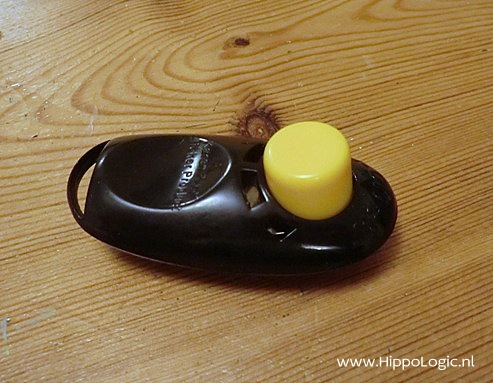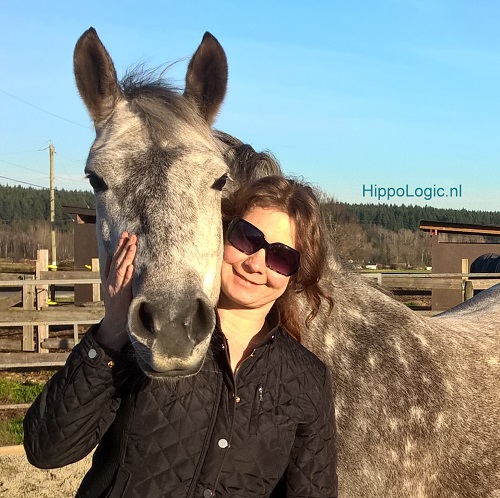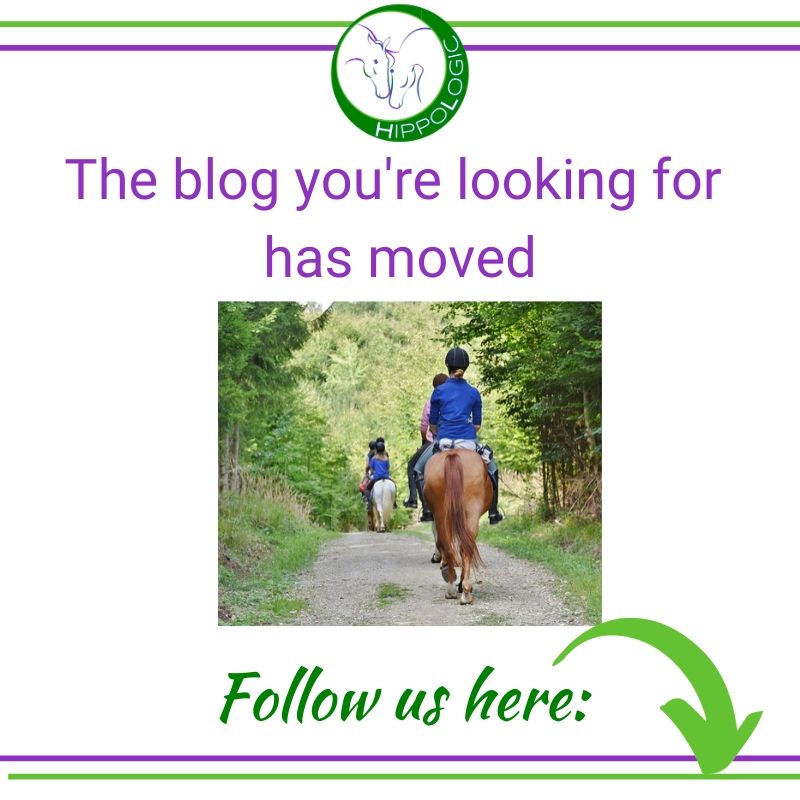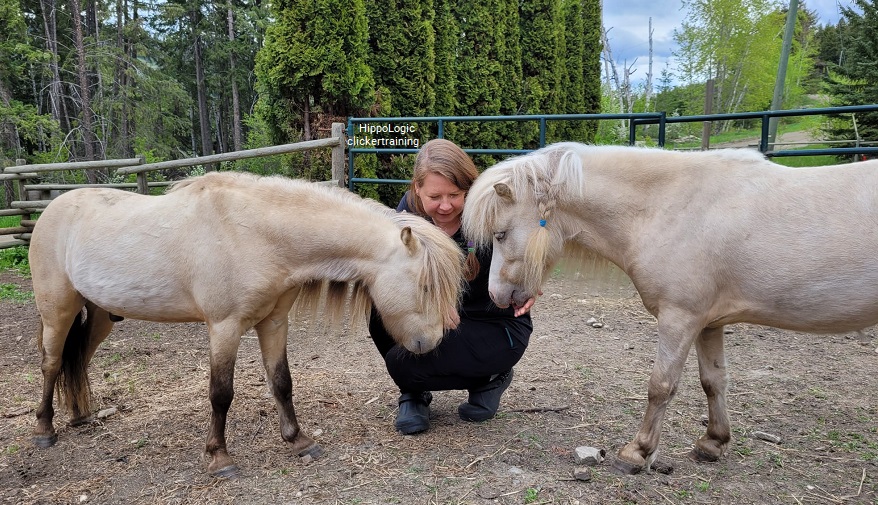Most horses get super excited when they get introduced to positive reinforcement (clicker) training. They literally won’t stop. They are always ‘on‘ and in training mode. This can be very exhausting for the owner (and for the horse too).
Green horses
When horses are new to clicker training they get appetitives for things they do (the desired behaviour). Therefor it’s understandable that they will try go get a treat by offering the desired behaviour. They are training you.

If you don’t give them what they want and expect, it can cause confusion in your horse and even frustration. He doesn’t understand that just a minute ago he lift his leg and he got a click and treat and now he lifts his leg and gets ignored or maybe even shouted at! ‘What’s going on?’ the horse wonders.
You horse doesn’t understand that training for Spanish walk is wanted and desired in the arena, but when you walk in front of him at the grooming place it’s undesired. What? It’s the same behaviour!? Why doesn’t he get the same response?
What’s clear to us, might not be clear for our animals. Try to see it from his perspective.
Clarity
Here are some things that give clarity:
- Use a clear End-of-Session-signal. This indicates: ‘No more clicks can be earned from now on.’ Stick to it! Be consistent!
- Using a unique end of session signal for a break or indicate the end of the training session gives the horse the security that he won’t miss out and he can relax.
- You can use an end of session signal in between training sessions too, so your horse can mentally take a break and relax a few minutes.
- Some horses even need a start-session-signal at first. Some horses think that if you’re in sight, a training session is starting. This can be confusing for your horse. A start session-signal can be calling your horse’s name or simply say: ‘Pay attention.’
Safety
Clarity also increases safety. If your horse exactly knows when a lesson is in session, he will learn quickly that offering behaviours is a desired action and they will be reinforced.
He also learns that offering his latest trick or behaviour after your end of session-signal will never leads to clicks.

‘High risk’ behaviours
If your horse knows this, and they learn quickly when behaviour will be reinforced (in a session) and when it won’t (outside training hours), you can safely train more ‘high risk’ behaviours.
A ‘high risk’ behaviour is a behaviour that can be dangerous if it’s performed unexpectedly. If you train Spanish walk and your horse will offer that front leg up in the air when you’re standing in front of him to lead him, chances are that you’ll be hit by his flying leg.
Same goes for training lying down: you don’t want that behaviour offered spontaneously when you’re riding! Right?

If horses know the end-of-training signal, they know his vending machine is closed, no matter how many quarters (behaviours) are thrown into it. It’s empty. It won’t work. They will safe these behaviours for training sessions.
Of course it’s best to put behaviours on cue as soon as possible, for clarity and safety reasons. However, tn the learning process there will always be a short period when a trained behaviour is not yet confirmed and on cue. An end-of-session signal will help keep you and your horse safe.
Here is how much clarity it gives
In this video you see I end our training by giving Kyra an end of session signal. Putting my empty hands up and say ‘All gone!‘ indicates ‘You’re free to do what you want to do. You won’t miss out on clicks and treats.’ I knew she wanted to roll so badly but she wasn’t doing it because a training session was going on.
Bring a horse to the pasture safely
Here is another example that will help increase safety.
In the past I’ve had bad experiences with traditionally trained horses that run off immediately when released in the field. Sometimes you don’t even get a chance to take off the halter safely. Other horses even kick and bolt in order to get their freedom. Very dangerous!
To prevent such behaviours I give a treat after I release horses in the pasture. In the beginning they get a treat before taking the halter off and after taking it off. Later in training I give a treat only after I take the halter off and get out of the pasture. Instead of running off they will linger in the hope for a treat. Then I fade out the treat.
In this video Kyra didn’t want to leave me, so I gave my end-of-training-signal. That’s when she realized that she wasn’t missing out on reinforcers (food or attention).
It’s clear how powerful that end-of-training signal is. My horse that almost nevers runs in the pasture.
Any thoughts or questions about using or introducing an end-of-session-signal? #justask
Do more with Clicker Training!
Are you a compassionate horse owner who wants to build a strong friendship with your horse? Would you like to understand your horse better and help your horse to understand YOU better? Get access to high quality online training and a fabulous, supportive R+ community in our HippoLogic Clicker Training Academy. Check out the link!
Want to do more with Clicker Training?
Join the HippoLogic Academy! I coach and support you personally getting your dream results with positive reinforcement, so that you can bond with your horse in the process. Create a connection build on mutual trust and understanding, a clear two-way communication built on love. Click the image to go access the application form ↓

Not sure? Start with a free clicker training assessment to get taste of what it feels like to work with me. When you have a specific struggle that you want to overcome, don’t hesitate to contact me.
In this assessment you’ll discover what’s holding you back from accomplishing the things you want with your horse. After our conversation you’ll know exactly what to do, in order to move forward towards your goals.
Happy Horse training!
Sandra Poppema, B.Sc., founder of HippoLogic & HippoLogic Clicker Training Academy

Join us!








 Train wanted behaviour quickly
Train wanted behaviour quickly Feeding treats as a reward won’t necessarily get you the desired outcome. You have to use treats as reinforcer. To strengthen behaviour, not just to reward behaviour.
Feeding treats as a reward won’t necessarily get you the desired outcome. You have to use treats as reinforcer. To strengthen behaviour, not just to reward behaviour.





 Preventing pitfalls
Preventing pitfalls


You must be logged in to post a comment.